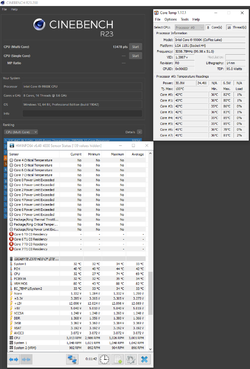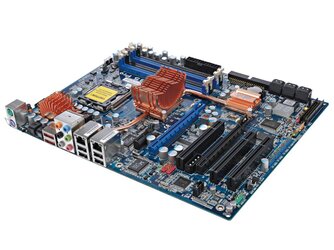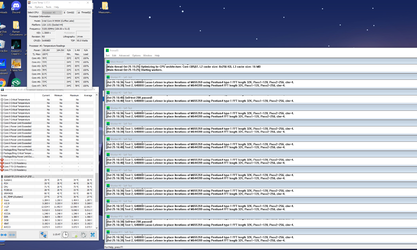Hi everyone,
Just want to share my own personal experience with the i9 9900k on the Gigabyte Z370 HD3.
Some background - I originally had this board with 8700k - I did not like the board one bit, it was a pain to get to 5GHz. It took -2 AVX offset, voltage was all over the place, temps were nuts (90c+ cpu). It's in general not known to be a good board. How I ended up with a 9900k on it is a long story.
I plugged it into my system and it booted without problems. I immediately went to the bios and started overclocking: 5GHz, No AVX offset, Uncore 43, 1.35V. I disabled C states and changed the loadline calibration settings (AC/DC: Performance, Vcore Loadline: High). I did not touch power limits in bios.
XMP settings from Corsair 16G 3200MHz enabled. Cooled By Arctic Liquid Freezer II 280mm inside a Cooler Master H500P Mesh.
It booted at 5GHz, went into Windows. I started benching it. The results:
Cinebench R15

Cinebench R23

The hottest core reached 91c, which is actually not that bad. R23 is a 10 minute continuous loop run, it gives a better indication of throttling and stability than R15.
These results are pretty good and match the results for i9 9900k 5GHz with top Z390 boards (as well as i7 10700k 5GHz with Z490 boards).
There is an important point here that I have to emphasize. The VRMs on this board need active cooling for OC. Even though I have decent airflow in my case - VRM area wide open (see picture), with unblocked 140mm exhausts - it wasn't enough. What do I mean by not enough: VRM temps reached a maximum of 125c. At 120c-125c, core clock drops to 3.6. What I did to resolve this issue was to place a 92mm slim Noctua fan on the VRM, and as you can see in the R23 picture, max VRM temp was 89c, no throttle.

(Yes, I know that RAM stick looks lonely, I have another stick arriving on Sunday)
What still needs to be done - more stress tests - I only ran RealBench for 30 minutes + 30 minutes of R23 loops as indicators of stability. Probably good enough not to run into a BSOD while gaming or doing office work.
If it passes a few hours of RealBench I'll try pushing for higher clocks (5.1-5.3 not unheard of for 9900k), but the results thus far are pleasing.
In short - You can you reach 5GHz on 9900k with a Gigabyte Z370 HD3, benchmark scores show no decrease in performance, VRM needs a fan for sustained heavy load. Still need more tests for max overclock + everyday and absolute stability.
Update: 9 days in: Stability thus far has been reasonable. I passed 1.5h small FFT (no AVX), 1.5h blend, 1.5h RealBench. Typical 24/7 usage (gaming, web browsing, etc) - Perfect stability at 5GHz, not a single BSOD.
Full blown P95 AVX was not tested - I don't think it's needed
Another update: 5.1GHz is R15 and R23 stable.

Just want to share my own personal experience with the i9 9900k on the Gigabyte Z370 HD3.
Some background - I originally had this board with 8700k - I did not like the board one bit, it was a pain to get to 5GHz. It took -2 AVX offset, voltage was all over the place, temps were nuts (90c+ cpu). It's in general not known to be a good board. How I ended up with a 9900k on it is a long story.
I plugged it into my system and it booted without problems. I immediately went to the bios and started overclocking: 5GHz, No AVX offset, Uncore 43, 1.35V. I disabled C states and changed the loadline calibration settings (AC/DC: Performance, Vcore Loadline: High). I did not touch power limits in bios.
XMP settings from Corsair 16G 3200MHz enabled. Cooled By Arctic Liquid Freezer II 280mm inside a Cooler Master H500P Mesh.
It booted at 5GHz, went into Windows. I started benching it. The results:
Cinebench R15
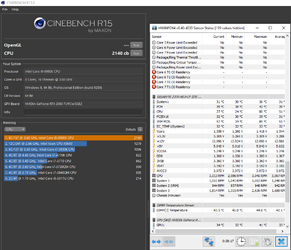
Cinebench R23
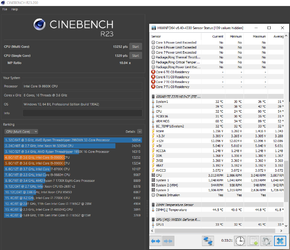
The hottest core reached 91c, which is actually not that bad. R23 is a 10 minute continuous loop run, it gives a better indication of throttling and stability than R15.
These results are pretty good and match the results for i9 9900k 5GHz with top Z390 boards (as well as i7 10700k 5GHz with Z490 boards).
There is an important point here that I have to emphasize. The VRMs on this board need active cooling for OC. Even though I have decent airflow in my case - VRM area wide open (see picture), with unblocked 140mm exhausts - it wasn't enough. What do I mean by not enough: VRM temps reached a maximum of 125c. At 120c-125c, core clock drops to 3.6. What I did to resolve this issue was to place a 92mm slim Noctua fan on the VRM, and as you can see in the R23 picture, max VRM temp was 89c, no throttle.
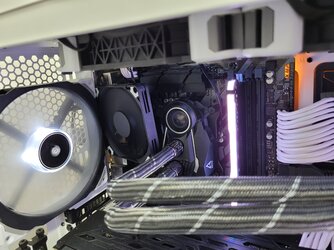
(Yes, I know that RAM stick looks lonely, I have another stick arriving on Sunday)
What still needs to be done - more stress tests - I only ran RealBench for 30 minutes + 30 minutes of R23 loops as indicators of stability. Probably good enough not to run into a BSOD while gaming or doing office work.
If it passes a few hours of RealBench I'll try pushing for higher clocks (5.1-5.3 not unheard of for 9900k), but the results thus far are pleasing.
In short - You can you reach 5GHz on 9900k with a Gigabyte Z370 HD3, benchmark scores show no decrease in performance, VRM needs a fan for sustained heavy load. Still need more tests for max overclock + everyday and absolute stability.
Update: 9 days in: Stability thus far has been reasonable. I passed 1.5h small FFT (no AVX), 1.5h blend, 1.5h RealBench. Typical 24/7 usage (gaming, web browsing, etc) - Perfect stability at 5GHz, not a single BSOD.
Full blown P95 AVX was not tested - I don't think it's needed
Another update: 5.1GHz is R15 and R23 stable.
